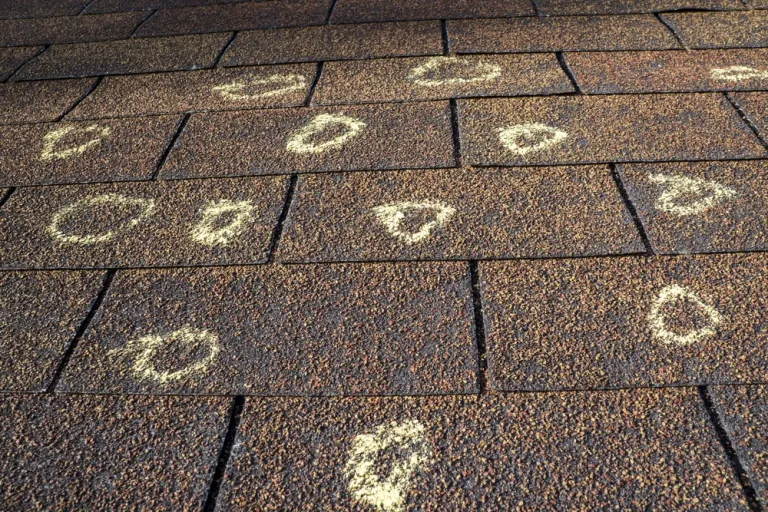


Inspect and Document like an insurance adjuster would
Inspecting a roof for storm damage is a critical skill for any roofing salesman, as accurately assessing damage will help you provide valuable information to homeowners and potentially lead to repair or replacement projects.
Thank you for reading this post, don’t forget to subscribe!Begin your inspection from the ground. Look for signs of damage such as missing shingles, damaged flashing, or debris on the ground from broken shingles or tiles.
Check gutters and downspouts for granules that have washed off asphalt shingles. A large amount of granules in the gutters can indicate significant shingle wear. Once on the roof, systematically inspect all areas. Look for missing, lifted, or damaged shingles or tiles. Asphalt shingles might have cracks, dents, or missing granules. For tile roofs, look for cracked or broken tiles.
Pay special attention to areas around chimneys, vents, pipes, and skylights. These are prone to leaks and may show signs of wear or damage in the flashing.
Hail damage can be subtle or significant. On shingles, look for dents, bruising, or circular crack patterns. On metal roofs, look for dents and any damage that might compromise the roof’s integrity.
Wind can lift shingles from their edges or completely tear them off. Check for shingles that are missing, lifting, or have broken adhesive seals.
If possible, inspect the attic or interior ceilings for signs of water intrusion, such as stains or mold, which can indicate a compromised roof.
Take detailed notes and photos of any signs of damage. This documentation is crucial for homeowners when they file insurance claims or plan for repairs.
If significant damage is found, advise the homeowner to considerer filing an insurance claim on their Homeowner’s policy as the cost of the repair or replacement will typicallybe higher than the deductible amount.
Educating homeowners about what you’ve found and the potential implications for their roof’s integrity and their home’s safety is key. Your role as a salesman also involves guiding them through their options, including repairs, insurance claims, and replacement if necessary, with honesty and professionalism.
- 10 Essential Steps To Starting Your Roofing Business
- Choosing the Best Accounting Software for Your New Roofing or construction Company.
- Cougar Paws: The Best Roofing Boots
- Deciding on a purpose made CRM roofing software for a new roofing or construction company.
- Does Radiant Barrier Installed On A Roof Work?
- Establishing an LLC for Your Roofing or Construction Company
- Finding Your Niche In the Vast Industry of Roofing
- Frequently Asked Questions (FAQs) for Starting a New Roofing Company
- How To Be Successful In The Roofing Business
- How To Measure A Roofing Square For Homeowners.
- Insurance Proceeds 101
- Is Starting A Roofing Company Worth It?
- Most Common Roofing Terms
- Own a roofing company in two weeks. Turn a profit in 2 months.
- Privacy Policy
- Roofing SEO Services; Is It Actually Worth It?
- The Most Common Roofing Materials: Starting a Roofing Company
- The right ladder for a roofing salesman, insurance adjuster, or homeowner.
- The Tools needed for building a successful roofing company.
